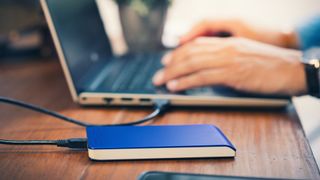
When you purchase through links on our site, we may earn an affiliate commission. Here’s how it works.

Any computer users will want to know how to fix an external hard drive that’s not showing up. After all, there’s no point having one of the best laptops or best computers if you can’t access the files you need from your external drive.
Obviously, too, there’s the worry that any precious files stored on the drive will be lost — from treasured family photos to important work documents and even your favorite game files.
Thankfully, if you have an external hard drive that’s not working, there are a few ways to try and fix it. These range from relatively minor settings tweaks to actual physical triage.
Do remember, though, that hard drives are not meant to last forever. They have a lifespan which is certainly possible to reach during ownership. Mechanical hard drives are also notoriously susceptible to physical damage from knocks and drops, rendering them beyond saving. Both of these factors mean, we’re sorry to say, that it is possible your files are gone for good.
Still, you don’t have much to lose by trying to fix your drive. So, here’s how to fix an external hard drive that’s not showing up.
Read on for detailed instructions regarding each step.
This may sound like an obvious step to follow, but the simplest faults are often the most common when it come to tech. While most external hard drives get their power from their single USB port that also provides the data transfer channel, others may require an external power source, such as an AC supply or a secondary USB port.
Get instant access to breaking news, the hottest reviews, great deals and helpful tips.
By submitting your information you agree to the Terms & Conditions and Privacy Policy and are aged 16 or over.
1. Firstly, check the enclosure of your external hard drive to see if it has more than just a single USB port. If it does, connect either an external AC power supply (it's recommended to use the one that it originally came with, or one that matches the ratings printed on the enclosure if you don't have the original) or a USB cable to the port, and it should power on. You may also need to press a power button or flip a power switch to an "On" position, following this.
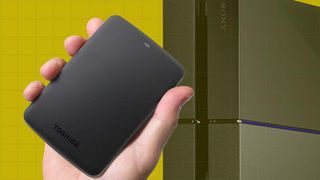
For all their uses, USB ports like to mess with us from time to time, so it helps to troubleshoot the port.
1. Try plugging your external hard drive into a different USB port on your computer, to see if this makes a difference. It may help to restart your computer if this doesn't work, since this should "refresh" your ports if they're acting up.
2. If you're plugging your drive into a USB hub, try connecting it directly to its own USB port on your computer instead. Alternatively, check whether your USB hub has an external power port (such as an AC power supply or USB port), since some hubs need an extra boost of energy to power certain devices such as external hard drives.
3. Failing this, try connecting your external hard drive to another computer, if you have one to hand. Since Windows and Mac computers have compatibility issues with certain types of drive format, you may find that your drive works in a Windows PC if you're running a Mac, and vice-versa.
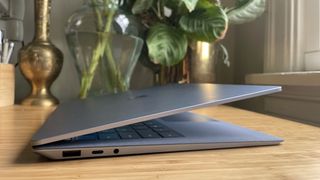
If your external drive is connected and powered up as it should be, you may need to enable it manually in Windows.
1. Open Disk Management by launching the Start menu and typing "disk management". When it appears, click Create and format hard disk partitions.
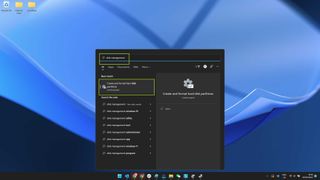
2. Next, check if your drive appears on the list of available drives. If it does, and has the label "offline" underneath it, you need to enable it. To do this, click your drive's name. Right-click inside the gray box, then click Online. This should enable your drive, allowing you to use it right away. (Note: The screenshot below says "Offline" but it will read "Online" if your drive is working correctly.)
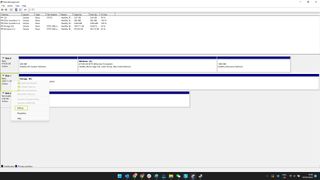
3. If this doesn't work, you may need to allocate a drive letter to your external drive. To do this, right-click inside the gray box, then click Change Drive Letter and Paths to assign a drive letter.
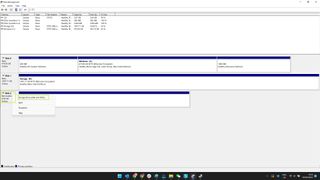
4. If you see the dreaded word "Unallocated" by your drive's name, this means you'll need to format your drive before it'll work, deleting its contents in the process. To do this, right-click on the drive's name, then click New Simple Volume. Before doing this, you may want to try some of the other methods mentioned in this guide, unless you don't mind resetting and deleting your drive.
If you're using a Mac, the equivalent of checking whether a drive is enabled is checking whether or not it is mounted.
1. Open Disk Utility by typing "disk utility" into Spotlight, or via the Utilities folder in Applications. Your drive should appear in the left hand side under External. If you can see the drive, but its name is grayed out, click Mount in the top right hand corner of the page. If you don't see it at all, skip to step 4 at the bottom of this section.
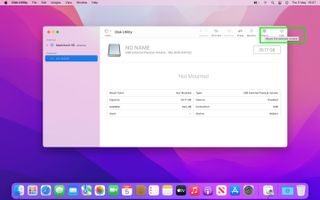
2. If mounting the drive doesn't work, hit First Aid, then click Run.
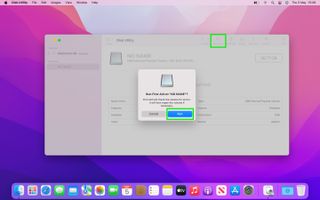
3. If First Aid finds no problems, but you still can't mount or access the disk, click Erase to format the drive, then select a Format from the dropdown, give the drive a name and hit Erase. Again, before doing this, you may want to try some of the other methods mentioned in this guide, unless you don't mind resetting and deleting your drive.
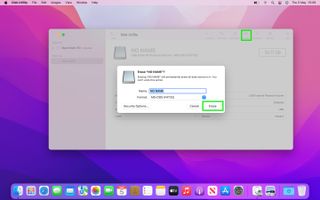
4. If you can't see your drive at all, restart your Mac with the drive plugged in. If it still doesn't appear, try a different machine if you have one. Unfortunately, if this still doesn't work, it may be time to look into buying a new drive using our best external hard drives buying guide.